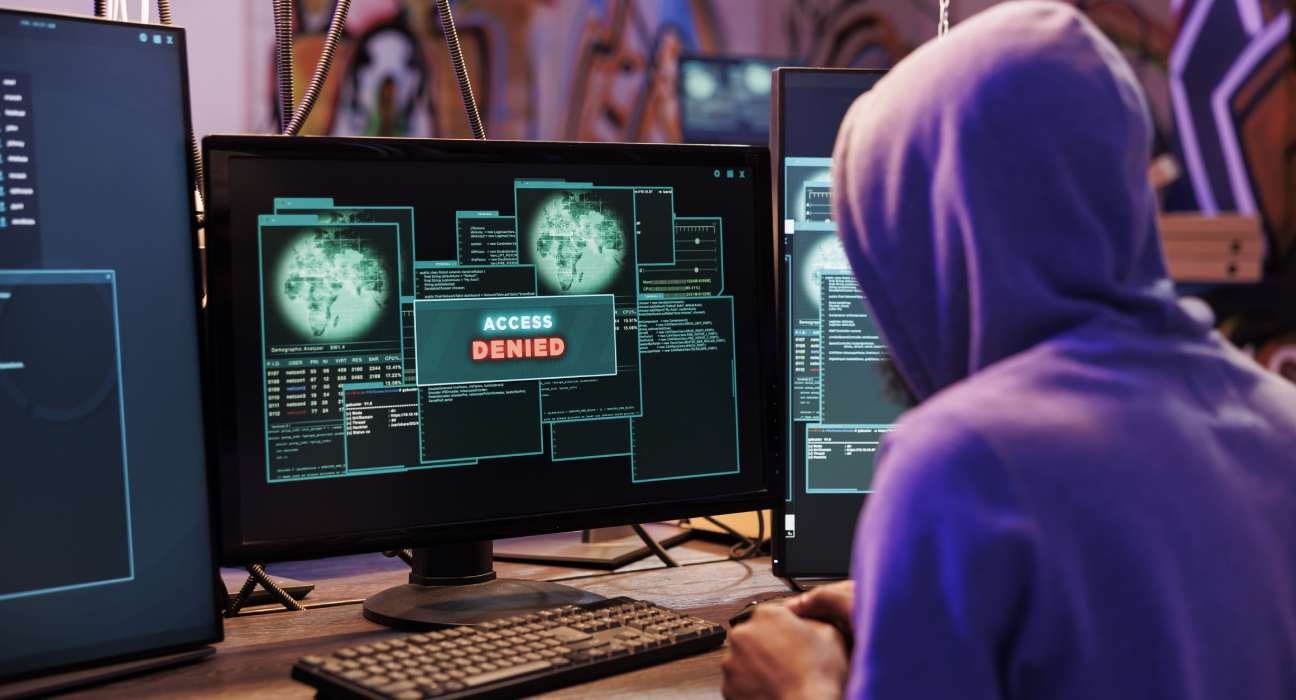In today’s era where we are surrounded by various electronic gadgets and technological advances, these tools and accessibilities have become an essential part of our lives. These tools range from surveillance cameras at public places like parks and streets to firewalls that protect our online data and identities and serve an important role in protecting both our digital as well as our physical environment or surroundings. While the basic fundamental goal of these tools and advances is to protect us from all potential threats, it is also important to understand that using them in our daily lives can have serious implications on our mental health and well-being.
Contemporary Landscape of Cybersecurity
In recent years, the usage of cybersecurity systems has evolved and increased tremendously. This usage is motivated by the concern for public safety, information breaches, cyberterrorism, and cyberattacks. This wholesome acceptance of cybersecurity measures in our surroundings has led to an increased interest in understanding the broader and wider effects of these technologies on people’s mental health. As a result, it has become now more important to go deeper into this complex system by considering both the negative and positive parts that it sustains.
Also Read: Family Dynamics: Navigating Relationships and Parenthood in Your Lifestyle
The change in the technology scene increasing because of sustainable worldwide internet usage, the emergence of social and digital platforms, increased accessibility of mobile phones and devices, and the dependence on mobile-based applications to fulfill the demands of media consumption and social networking have changed the scenario of technology for adolescents and young adults in this era.
According to Clinical Psychologist Aarti Singh, the impact of cybercrime on mental health cannot be overstated. Cybercrime can cause emotional distress, anxiety, and depression. Victims of cybercrime may experience feelings of violation and loss of control, which can have long-lasting effects on mental health and well-being. Cybercrime can also lead to financial loss, which can cause stress and anxiety.
Cybercrime may also have a significant impact on relationships. Victims of cybercrime may experience social isolation and may have difficulty trusting others. Cybercrime may also lead to online harassment and cyberbullying, which can have significant psychological effects on victims such as experiences of anger, fear/nightmares, and flashbacks. Cyber trauma- may become life-changing. Developing PTSD and other emotional traumas is more likely when security breaches involve personal data.

Cyber Bullying
Cyberbullying means the use of electronic gadgets or devices or any other digital technology to harass, intimidate, and cause distress or harm to other people. It also involves several online behaviors:
- Cyberstalking
- Name-calling
- Cyber harassment
- Sending coercive messages through text
- Spread of online rumors
- Disclosing passwords without permission
- Uploading offensive content on a public forum
- Alteration of content
- Online impersonation
- Unwanted persuasion for sex
Cyberbullying is more common among adolescents and young adults than older people. A few factors that play an important role and contribute to cyberbullying are environmental factors, personality traits, and personal factors. Cyberbullying can be linked to and caused by delinquency, aggression, substance use or abuse, and mental health factors like psychiatric disorders, poor psychosocial adjustment, suicidal ideation, antisocial behavior, depression, anxiety, self-harm, and even poor life satisfaction.
Effects of Social Media
Social networking sites which are also known as social media have now become a very important as well as essential, part of today’s generation and their lives. There are a term ‘digital natives’ which refers to this new generation that was born into and brought up in this era of digital technology, unlike the generation who had to navigate their way to learn and adapt to the technology and digital environment. This generation is known as ‘digital immigrants’. As the use and popularity of these social media sites are growing, it has been used widely as a platform to make, maintain, and share connections with people of mutual interests and goals.
Also Read: How To Protect Your Child from Cyber Related Problems
Social media is also used widely in higher education to engage with students, approach faculties, promote research-related endeavors, and make professional connections, making learning through digital and online sources a very popular and increasing way of course delivery. However, these perks do not come without negative aspects. Excessive use of social media and such digital platforms leads to various mental health conditions and psychological problems. It causes various disruptions in life for example:
- Social isolation
- Sleep deprivation
- Suicidal thoughts
- Substance use or abuse
- Anxiety
- Obesity and
- Psychological distress
In the social settings and society as well, the meanings and dynamics of friendships and relationships have also changed and redefined which leads to the breakdown of some important social norms and interpersonal boundaries that earlier defined human interaction. In the context of employment, social platforms are also used to explore hiring decisions, where recruiters or employers do routine screening for potential job seekers and prefer not to work with applicants who post certain content that might not be appropriate for their company on their social media handles.
Cyber Dating Violence
Cyber Dating Violence refers to the use of digital platforms and technology to monitor, control, harass, or stalk a dating mate out of insecurities, attachment anxiety, anger, jealousy, clinginess, or any other negative impulses or emotions.

Some of the examples can include sending threatening messages, imposing surveillance, and stalking the partner online. Prevalence rates range from 22% to 50%, with mixed evidence of gender differences in cyber-dating perpetration. Some pieces of evidence also suggest that promoting stereotypical gender beliefs and internalizing strict gender narratives and peer norms leads to and encourages dating violence.
According to psychologist Aritri Gosh, excessive use of social media increases cybercrime. Victims of cybercrime feel mentally disturbed. They may experience anxiety and other mental health issues. Trolling is not good for people’s mental health. People need to stop these things; it decreases their confidence and also causes them to take wrong steps in their lives. Any individual who is dealing with mental health issues can seek help from a mental health professional.
Sexting
The act of sending pornographic or nude or semi-pornographic images, text, and videos to express, flirt, and please for the sexual interest. Sexting can be seen as an advanced sexual encounter that facilitates bonding and communication attraction. Sex or gender differences in the context of sexting can vary with males more likely to perceive it more positively. Sexting can generate mixed and confused emotions and young adults and adolescents that get involved might face legal consequences of it.
Also Read: Media Psychology: Influence of Media on Behavior and Perception
Promoting Cyber Security
The increasing use of digital media among the younger generation has brought about increased risks, including cyber risks. Social work practitioners and other stakeholders, such as parents, teachers, school administrators, and clinicians, must take proactive steps to address these concerns. They can teach children how to make good online decisions, promote a “no-judgment, no-questions reporting regime,” and educate them on online technology and social norms. Schools should develop policies to prevent cyber risks, raise awareness of these risks, and implement a healthy relationship program. Clinicians can help address the aftermath of online trauma, while healthcare providers can screen youths about online bullying behaviors. Lawmakers and legislators must keep pace with the evolution of digital technology to effectively control digital crimes.
According to Clinical Psychologist Subasana, The concept of “being secured” in itself seats quite well when it comes to mental well-being. Coming to the world of cyber security, some of the prime factors that lead to disharmony in mental health well-being are- 1) Anonymity that prevails in the context of “being available” in the cyber world or precisely the social media world. 2) Repeated need to check encryptions like, “if I am encrypted on different platforms”, “if my communication is secured”, and” not leaving any notification to check” when it comes to checking any app.
Areas of mental health well-being affected due to the above-mentioned factors involve- 1)”distress created due to it”, and 2)The “repeated thought to check”, leads to clinical obsession, which might also include actually checking, leading to clinical compulsion. Now, coming to dealing with it. First of all, proper education in the components of cyber security and staying away from different kinds of myths, “like we have to keep checking”. The important mental health concepts that need to be addressed in this regard involve the illusion of invulnerability, confirmation bias along with overconfidence is very important. Moreover, as artificial intelligence is taking its role at present, giving a correct probe to the AI platforms would go a long way in keeping the answers to it in a proper systematic manner, be it SORA, or ChatGPT to name of few. The goal should be to keep Mental health “Secured”!
References+
- Paat, Y.-F., & Markham, C. (2020). Digital crime, trauma, and abuse: Internet safety and cyber risks for adolescents and emerging adults in the 21st century. Social Work in Mental Health, 1–23.
- Stotts, Richard Hamilton, “Cyber Security in Mental Health: An Assessment of Current Practice and Behavioral Intent” (2020). Theses & Dissertations. 40.












Leave feedback about this